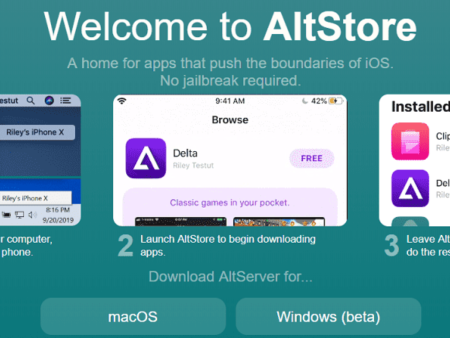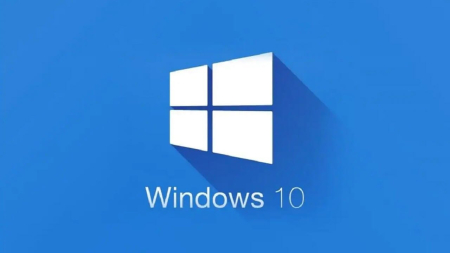Mobile Game Design: Strategies and Techniques for Mobile Game
-
27/03/2023
-
908
-
0
- 1. Understanding the Fundamentals of Mobile Game Design
- 2. Leveraging Mobile Game Design Elements to Engage Players
- 3. Designing for Mobile Devices and Platforms
- 4. Creating Effective Game Monetization Strategies
- 5. Incorporating Social and Multiplayer Features into Mobile Game Design
- 6. Balancing Creativity and Business Considerations in Game Design
- Conclusion
Mobile games have become an integral part of our lives, and designing a successful and engaging game requires a deep understanding of game mechanics, player psychology, and monetization strategies. In this guide, we will explore the strategies and techniques for creating a mobile game that captivates players and generates revenue.
Related posts
Boost Your App's Success with These Top ASO Tools And Techniques
A Comprehensive Guide to Keyword Research For ASO
1. Understanding the Fundamentals of Mobile Game Design
Understanding the fundamentals of mobile game design is crucial for creating engaging; and successful games. This involves defining game mechanics and UX design principles; examining the impact of platform limitations and device capabilities on design choices; and understanding the importance of user testing and feedback in the design process.
Firstly, game mechanics refers to the rules and systems that define how a game is played. Designers need to carefully consider how mechanics can be used to make a game fun and challenging; as well as balance them to avoid frustration or boredom. Meanwhile, UX design principles refer to how players interact with the game interface; and how it should be optimized to make the experience more enjoyable and intuitive.
Understanding the Fundamentals of Mobile Game Design, Source: Asoservice.com
Secondly, platform limitations and device capabilities can impact game design in several ways. For example; the size and resolution of mobile screens must be taken into account when designing graphics and UI elements; while the touch controls of mobile devices require careful consideration to ensure intuitive gameplay.
Finally, user testing and feedback are essential for evaluating the effectiveness of the game design. Designers need to conduct regular testing to identify issues or areas for improvement; as well as collect feedback from players to improve the game's mechanics, UX, and overall experience. By understanding these fundamentals; designers can create games that are enjoyable, engaging, and successful in the competitive world of mobile gaming. You can read Google reviews for more information about this.
2. Leveraging Mobile Game Design Elements to Engage Players
Mobile game design is a constantly evolving field, with new techniques and strategies emerging all the time to engage players and create a more immersive gaming experience. By leveraging key game design elements; designers can create games that are not only fun and engaging but also memorable and long-lasting.
Firstly, a compelling storyline can help to draw players in and keep them engaged throughout the game. A well-written narrative can make the game more immersive; and emotionally resonant while also providing a sense of purpose and direction to the gameplay.
Secondly, game mechanics that provide a sense of progress and achievement can help to motivate players and keep them engaged over the long term. For example, incorporating leveling systems, achievements; and rewards can create a sense of accomplishment and encourage players to keep playing.
Thirdly, intuitive and responsive controls are essential for creating a smooth and enjoyable gameplay experience. Designers need to consider the unique capabilities of mobile devices; and tailor controls to ensure that they are both intuitive and easy to use.
Finally, incorporating social features can help to create a sense of community and connection among players. Features such as leaderboards, multiplayer modes; and social media integration can enhance the gaming experience and foster a sense of competition and camaraderie.
By leveraging these and other key mobile game design elements, designers can create games that are not only fun and engaging but also have the potential to become long-term successes in the competitive world of mobile gaming.
3. Designing for Mobile Devices and Platforms
Designing for mobile devices and platforms requires a unique approach due to the unique characteristics and limitations of mobile devices; as well as the variety of different platforms available. Here are some key considerations when designing mobile games for different devices and platforms.
Firstly, screen size and resolution are critical factors to consider when designing for mobile devices. Designers need to create graphics and UI elements that are optimized for smaller screens while still maintaining a high level of visual appeal and clarity.
Secondly, designing for different platforms requires careful consideration of platform-specific features and capabilities. For example, iOS and Android devices have different hardware and software specifications, as well as different user interfaces and design conventions that designers need to take into account.
Thirdly, designing for mobile devices requires a focus on optimizing performance and minimizing resource usage. Mobile devices have limited resources; so designers need to create games that are lightweight and efficient in order to minimize battery drain and ensure smooth gameplay.
Fourthly, designing for touch controls requires a unique approach compared to traditional console or PC gaming. Designers need to create intuitive and responsive touch controls that are easy to learn and use while still providing a high level of precision and control.
Finally, designing for mobile platforms requires a focus on user experience (UX) design principles. Mobile games need to be designed with the user in mind; ensuring that the gameplay experience is intuitive, enjoyable, and engaging.
By taking these considerations into account, designers can create mobile games that are optimized ASO for the unique characteristics and limitations of mobile devices while still providing a high-quality, engaging gaming experience for players.
4. Creating Effective Game Monetization Strategies
Game monetization strategies are an essential aspect of mobile game design, as they provide a means for developers to generate revenue and sustain ongoing development and support for their games. Here are some key strategies for creating effective game monetization plans:
Identify your target audience: Knowing your target audience is essential for creating a monetization plan that resonates with them. Different audiences have different preferences when it comes to in-game purchases and ads, so understanding your audience is key.
Choose the right monetization model: There are several monetization models to choose from, including in-app purchases, advertising, subscriptions, and premium pricing. Each has its pros and cons, so it's important to choose the right one for your game and audience.
Balance monetization with gameplay: Players will quickly lose interest in games that prioritize monetization over gameplay. Monetization strategies should enhance the gaming experience, not detract from it.
Use targeted advertising: Targeted advertising can be an effective way to monetize games without disrupting gameplay. Advertisements that are relevant and useful to the player are more likely to be well-received.
Offer rewards and incentives: Offering rewards and incentives for in-game purchases can help incentivize players to spend money in your game. These can include bonuses, exclusive items, or discounts on future purchases.
Continuously update and improve: Continuously updating and improving your game can keep players engaged and interested and can also provide new opportunities for monetization.
By implementing effective game monetization strategies, developers can generate revenue while still creating engaging and enjoyable mobile games for their players.
5. Incorporating Social and Multiplayer Features into Mobile Game Design
Incorporating social and multiplayer features into a mobile game design can greatly enhance the player experience and increase engagement. Here are some key strategies for incorporating these features into your mobile game:
Enable social sharing: By allowing players to share their achievements and progress on social media platforms, you can increase exposure for your game and encourage player engagement.
Create social features within the game: Adding social features such as leaderboards, challenges, and chat functions can encourage friendly competition and enhance the social aspect of gameplay.
Implement multiplayer modes: Adding multiplayer modes to your game can provide a new level of excitement and challenge for players. Multiplayer modes can range from cooperative gameplay to competitive matches.
Consider cross-platform play: Allowing players to play with friends across different devices and platforms can increase the player pool and provide a more diverse gaming experience.
Use social media to promote community engagement: Creating and maintaining a social media presence for your game can foster a community of engaged players and help to spread the word about your game.
Use player feedback to improve features: Listening to player feedback can help you identify areas for improvement in social and multiplayer features, as well as other aspects of game design.
By incorporating social and multiplayer features into mobile game design, developers can create a more engaging and interactive experience for players. These features can help to build a sense of community and foster friendly competition, ultimately leading to increase App installs from Google ads.
6. Balancing Creativity and Business Considerations in Game Design
Game design is an art form that requires creativity, innovation, and technical skills to bring a vision to life. At the same time, designing a game is also a business venture that requires careful consideration of commercial viability, marketing, and revenue generation. Balancing creativity and business considerations is essential for creating successful and sustainable games. Here are some strategies for achieving this balance:
Start with a clear vision: A clear vision for the game will help guide the creative process while also keeping business considerations in mind. Think about your target audience, their interests, and what they are looking for in a game.
Understand the market: Research the market to identify trends and popular genres. This will help you identify potential gaps in the market that your game can fill while also ensuring that the game has commercial appeal.
Focus on gameplay: While graphics and sound design are important, gameplay should always be the primary focus. Create a game that is fun, challenging, and engaging for players.
Consider monetization strategies early on: There are various ways to monetize a game, such as through in-app purchases, advertisements, or a one-time purchase fee. Consider which monetization strategy is best for your game and implement it early on.
Test and iterate: Regular testing and iteration are crucial for both creative and business considerations. Testing can help identify areas for improvement in both gameplay and monetization, while iteration can help refine the game for maximum engagement and profitability.
By balancing creativity and business considerations in game design, developers can create games that are both innovative and commercially successful. By keeping the target audience in mind, focusing on gameplay, and iterating based on testing and feedback, developers can create games that appeal to players and generate revenue.
Conclusion
In conclusion, mobile game design requires a careful balance of creativity and business considerations to create engaging and successful games that appeal to players and generate revenue. By following the strategies and techniques outlined in this guide, developers can create innovative games that stand out in the market.
Related posts
https://asoservice.com/increase-app-installs-from-google-ads
https://asoservice.com/google-reviews
Thanks so much for reading this article.
Source: https://asoservice.com/




































Leave a Reply
Your e-mail address will not be published. Required fields are marked *